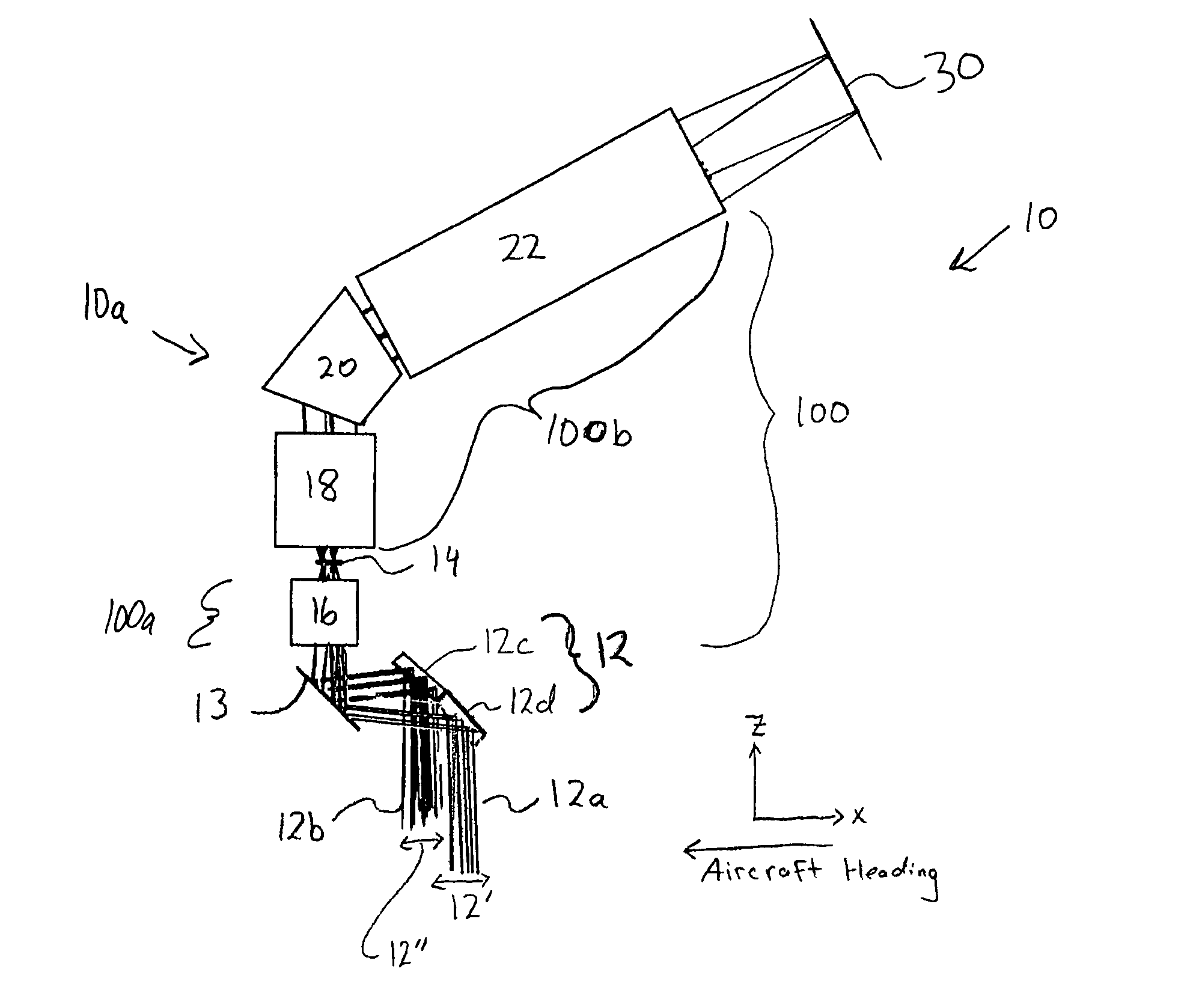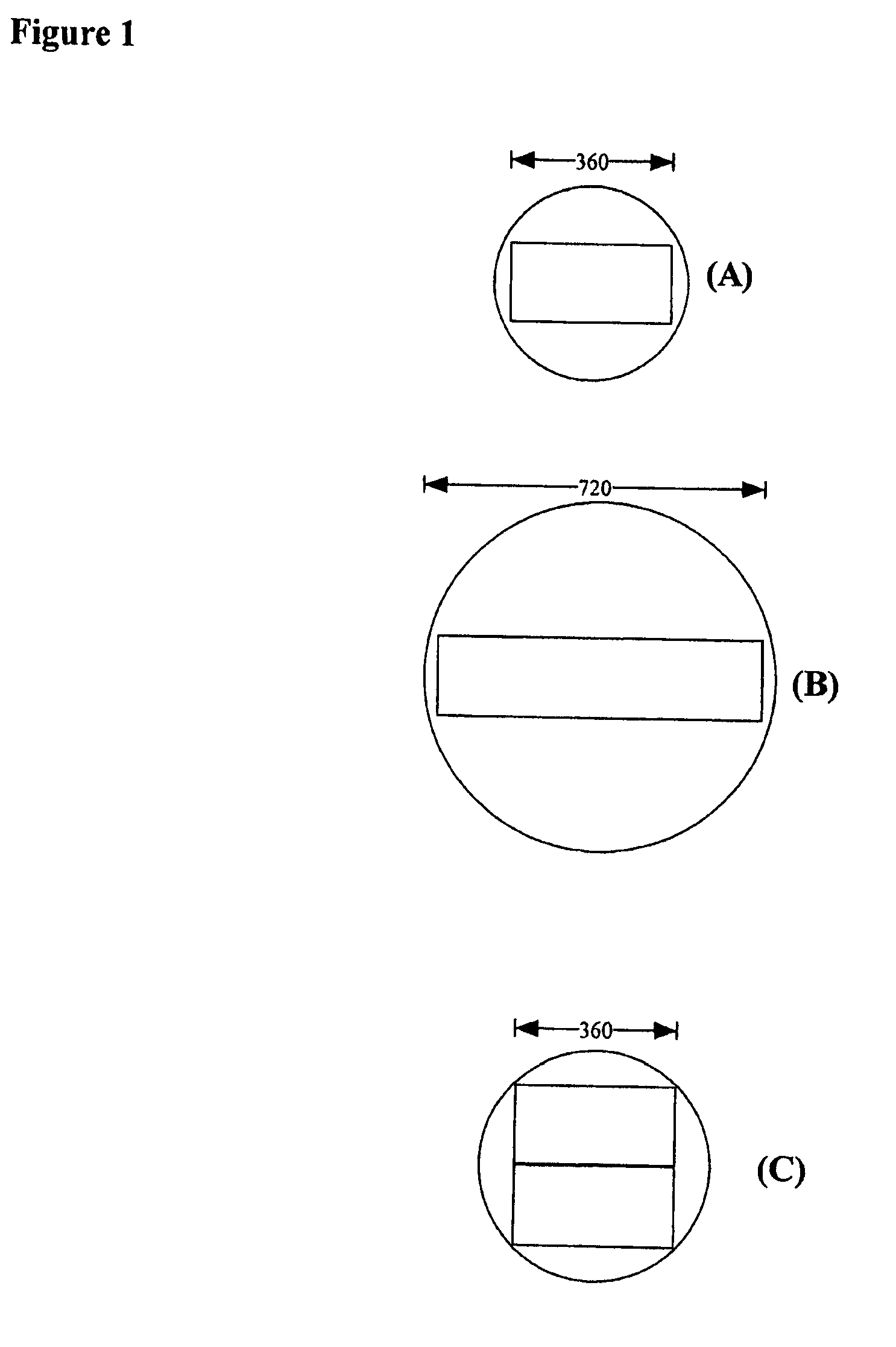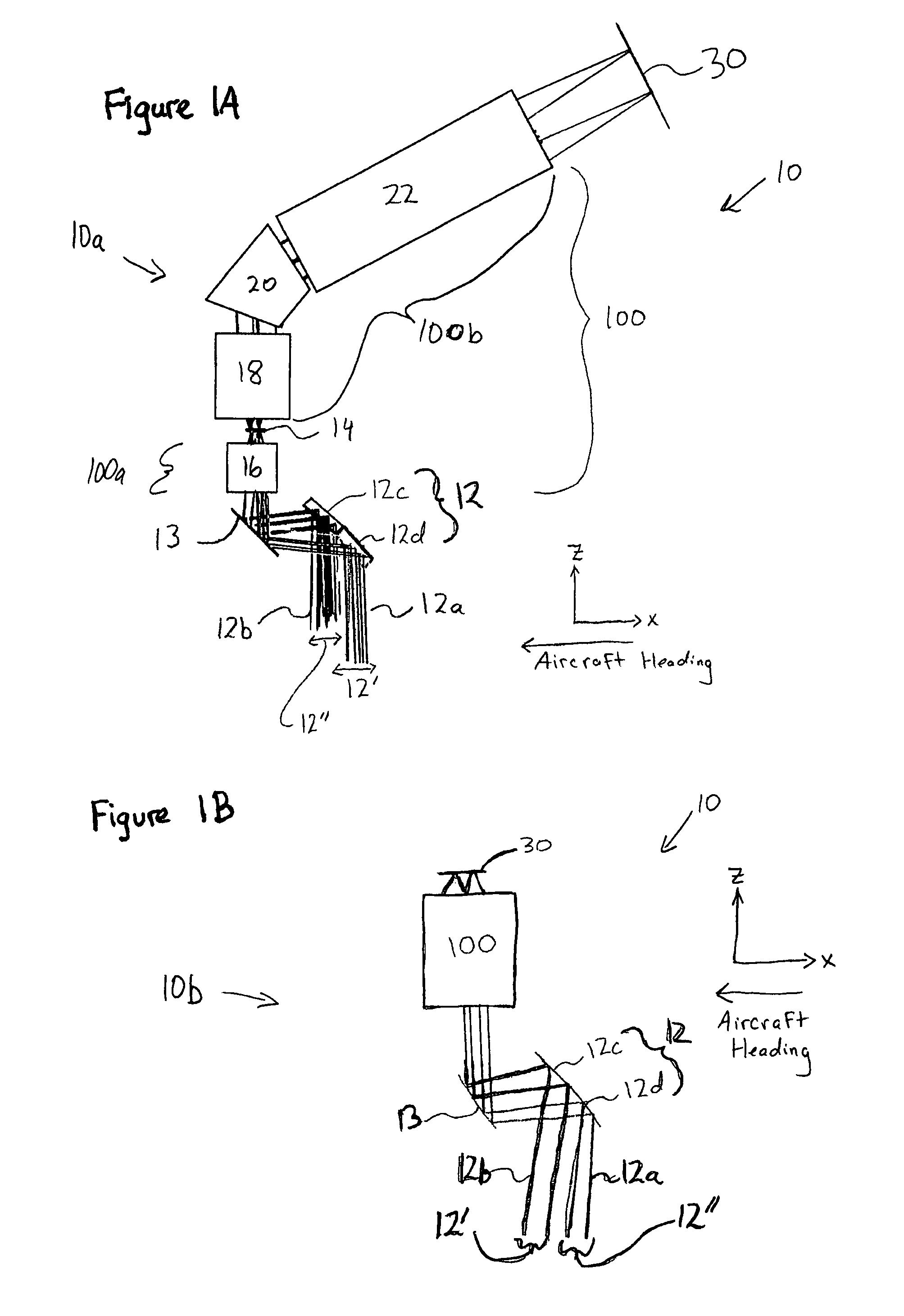Optically multiplexed imaging system and methods of operation
a technology of optical data collection and multiplexing, applied in the direction of spectral investigation, instruments, electrical equipment, etc., can solve the problems of insufficient utilization of focal plane rows insufficient utilization of pushbroom imaging spectrometers, and insufficient utilization of focal plane rows used for spectral dimension, etc., to achieve efficient utilization and improve the efficiency of optical data collection
- Summary
- Abstract
- Description
- Claims
- Application Information
AI Technical Summary
Benefits of technology
Problems solved by technology
Method used
Image
Examples
Embodiment Construction
[0057]In accordance with the invention and with reference to the figures, embodiments of an optical multiplexer 10 are described.
[0058]Generally, the optical multiplexer 10 includes a first optical path 12a for operatively receiving optical data from a first field of view 12′ and at least one beam deflection system 12c for operatively receiving optical data from at least a second field of view 12″ (FIG. 1B). The first and second fields of view (FOVs) may be identical and more than two FOVs may be imaged. The first optical path and at least one beam deflection system direct the optical data from the first 12′ and at least second 12″ fields of view through an optical train 100, the optical train for focusing the optical data passing through the optical train 100 onto adjacent sections of a focal plane array 30. In different embodiments, the focal plane array 30 may be a single sensor array or be comprised of separate sensor arrays that may be of a similar type or be different from one...
PUM
 Login to View More
Login to View More Abstract
Description
Claims
Application Information
 Login to View More
Login to View More - R&D
- Intellectual Property
- Life Sciences
- Materials
- Tech Scout
- Unparalleled Data Quality
- Higher Quality Content
- 60% Fewer Hallucinations
Browse by: Latest US Patents, China's latest patents, Technical Efficacy Thesaurus, Application Domain, Technology Topic, Popular Technical Reports.
© 2025 PatSnap. All rights reserved.Legal|Privacy policy|Modern Slavery Act Transparency Statement|Sitemap|About US| Contact US: help@patsnap.com



